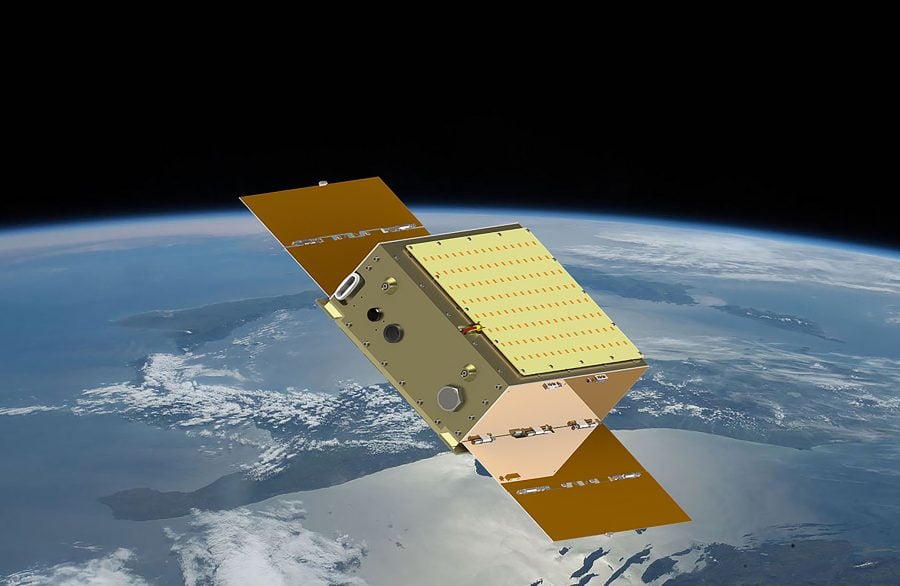
With Auris, the student-run Aerospace Enterprise at Michigan Tech has done it again.
Earlier this month, 10 Michigan Tech Aerospace Enterprise team members, all undergraduates, traveled to Albuquerque, New Mexico August 13-15 for the culminating event of the University Nanosatellite Program, a three-year design competition funded by the Air Force Research Laboratory – AFRL.
The Michigan Tech team won, along with teams from the University of Minnesota and Texas A&M. The three will now move to Phase B of the program, where they have AFRL funding for a multi-year development program to bring the spacecraft to flight maturity—and a guaranteed launch opportunity from the US Department of Defense. No launch date is set yet, but could happen as soon as 2024.
With Auris, the student-run Aerospace Enterprise at Michigan Technological University will have three working satellites. One of the team’s satellites (Oculus) is now in orbit; their second small satellite (Stratus) is due to launch in March 2023. Now, Auris will be the third to launch.
“It’s hard to say, but a conservative estimate is that at least 250 students have worked on the Auris mission since its inception, says Michigan Tech electrical and computer engineering student Matthew Sietsema, the team’s chief engineer and student lead.
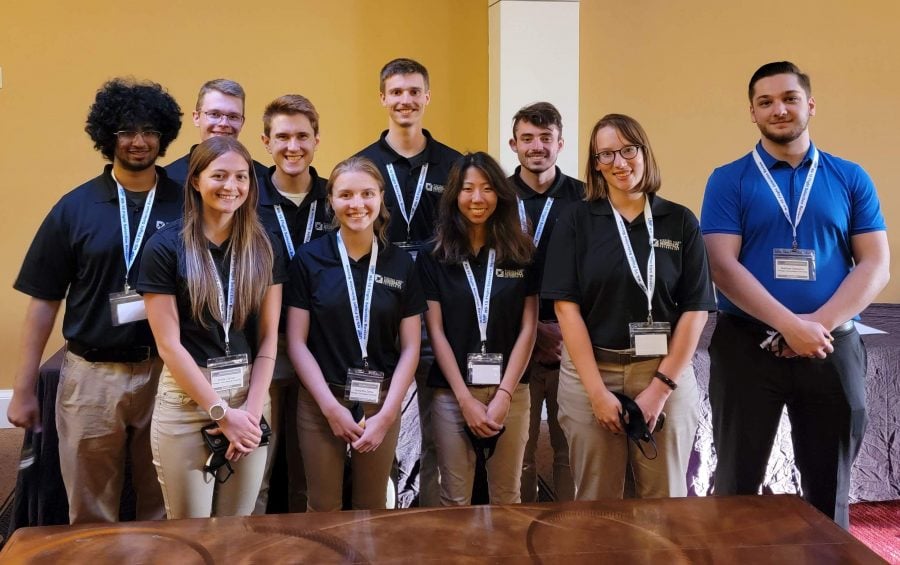
Lyon (Brad) King is the Richard and Elizabeth Henes Professor of Space Systems in the Department of Mechanical Engineering-Engineering Mechanics at Michigan Tech. As the founder and faculty advisor of the University’s Aerospace Enterprise, King empowers undergraduate students to design, build, and fly spacecraft.
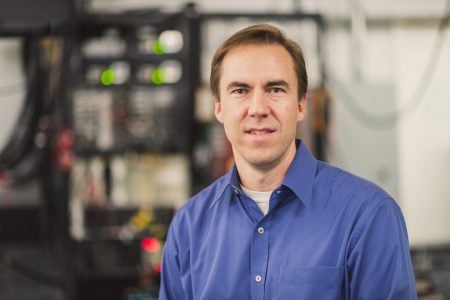
“Michigan Tech’s winning spacecraft is called Auris, which is Latin for ‘the ear,’ King explains. “Auris will fly in low-Earth orbit and will point its antenna ‘up’ to higher geostationary Earth orbit.” (Geostationary satellites are located 22,237 miles above the earth’s surface.)
“The spacecraft will listen to the signals broadcast from communications satellites as it flies through their transmission beams, and be able to map the spatial extent and shape of the transmission beams,” adds King. “Auris will also determine the location of the transmitting satellite.”
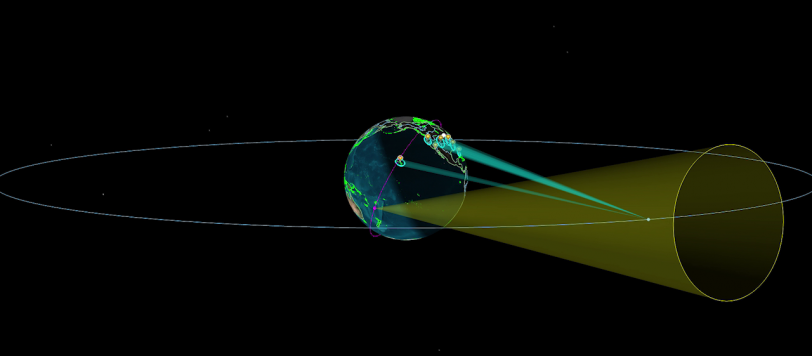
This is the second time the Michigan Tech Aerospace Enterprise student team has won the AFRL University Nanosatellite Program competition. The first time, in 2011, Michigan Tech was the sole winner with Oculus-ASR, which was launched from Cape Canaveral on a Space-X Falcon Heavy in June 2019. Oculus-ASR now serves as an imaging calibration target for ground-based observatories tasked with characterizing spacecraft.
In 2020 NASA slated Michigan Tech’’s second student-built satellite, Stratus, for a deployment from the International Space Station (ISS). That launch is expected in 2023. Stratus is a pathfinder mission funded by NASA’s Undergraduate Student Instrument Program and the CubeSat Launch Initiative. The Stratus vehicle is a three-axis-stabilized thermal infrared telescope that will be used to image atmospheric clouds.
“I am so incredibly proud of our Aerospace Enterprise team.”
At the University Satellite Program’s recent Flight Selection Review event in Albuquerque, a total of ten university student teams competed for the chance to advance their satellite design project to the next phase and launch: Missouri S&T, Minnesota, SUNY Buffalo, Texas A&M, Saint Louis, Western Michigan, Alaska Fairbanks, Michigan Tech, Auburn, and UT Austin.
Judges from Air Force Research Lab (AFRL), United States Space Force (USSF), Space and Missile Systems Center (SMC), Space Dynamics Lab, Missile Defense Agency, and NASA were present to evaluate the missions.
The MTU students staffed a booth, briefed their mission to the judges and other schools, and performed technical demonstrations for the judges.
“Michigan Tech will soon have no less than 3 student-designed and built satellites in outer space—it’s amazing.”
Michigan Tech’s award-winning Enterprise Program, with more than 25 teams working on projects and products with researchers and companies, provided the overarching framework for the Aerospace Enterprise.
Like all Enterprise teams at Michigan Tech, Aerospace Enterprise is open to students in any major. “It’s important for students to learn how to work in an interdisciplinary group,” says King. “In the workplace, they will never be on a team where every member has the same expertise. To design, build, manage and operate a satellite requires mechanical, electrical, computer science, physics, materials, everything— it really crosses a lot of boundaries and prepares them for a career.”
Last, but not least: “Aerospace Enterprise has a leadership and management hierarchy that is self-sustaining,” says King. “Current leaders are constantly working to mentor their successors so we have continuity from year-to-year.”
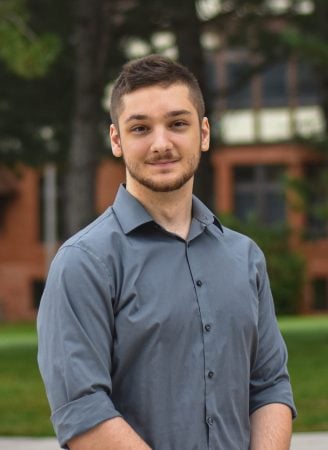
Q&A with Matthew Sietsema, Chief Engineer and Student Lead, Michigan Tech Aerospace Enterprise Team
Matthew Sietsema is an aspiring Space Systems Engineer working toward a Michigan Tech double major in Electrical Engineering and Computer Engineering. He’ll be graduating next December 2022. As Chief Engineer of the Aerospace Enterprise team’s two spacecraft programs, Auris and Stratus, Sietsema serves as the technical lead of 100+ undergraduate students. He’s head of all assembly, integration, and testing activities, requirements management and verification for the two satellites. “The dual purpose of the Auris mission,” he explains, “is both Space Domain Awareness (SDA), and Space Visualization.”
Q: How does it feel for Auris to win the AFRL University Nanosatellite Program along with the University of Minnesota and Texas A&M?
A: It feels incredibly gratifying and I’m extremely proud of our team and our mission! Auris has been in the works for more than five years at this point, and to be able to finally close the loop and push forward to the next phase is an electrifying prospect. My congratulations also go out to both UMinn and Texas A&M—the motivations behind each of our missions are very similar, so it’s validating to see the fundamental concepts of our mission being lauded all around.
Q: It sounds like Phase B is about building the actual Auris satellite. What all goes into that?
A: In part, yes. Phase A was about designing and building the prototype version of the spacecraft, known as the Engineering Model (EM). One of the primary focuses of Phase B, among many other things, is to construct the final spacecraft meant to go to space—the Flight Model (FM). We must first finish our build-up of the prototype, taking care to ensure that all of the individual components are working together properly and that the design itself is sound. From there, we move into building the FM spacecraft. This involves four distinct phases of build-up, or ‘integration stages’. The first is Component-Level Testing, where we ensure that each of the individual parts and circuit boards function as intended. Second is Subsystem-Level Testing, where we group components with similar jobs together and ensure that they can communicate with each other and correctly interoperate. Next is System-Level Testing, where we combine each of the discrete subsystems and make sure that the entire spacecraft works as designed. Last is Behavioral Testing, where we do an end-to-end verification of the function of the spacecraft and essentially ‘pretend’ to operate it like we would in space. The idea is to simulate and/or test everything that the spacecraft can possibly do, to make sure there are no unintended behaviors or nasty surprises once it gets on orbit.”
Q: Is it challenging for the team to manage several ongoing satellite missions?
A: At the moment, we only directly manage two missions: Auris and Stratus. Stratus is still under development, for another two years. Management of the Oculus mission was handed off to the Air Force when we delivered the satellite. But yes, the sentiment remains: it is incredibly challenging to manage a single spaceflight mission, let alone two at the same time. We have a strong core of leaders in our team, and do our best to foster an environment of learning and self-motivation. Our group is structured very closely to actual aerospace companies, so we rely on the tools of the industry and the experience of our members to catalyze progress and keep both missions on track.
Read More
Brad King: Space, Satellites, and Students
And Then There Were Two: MTU’s Next Student-built Satellite, Set to Launch